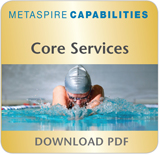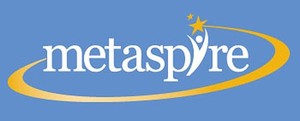six sigma glossary
1. Six Sigma – “Reduced process variation” Six Sigma methods provide businesses with the tools needed in order to improve the capability of their business processes through a series of measurement-based strategies. The result is an increase in performance and decrease in process variation. This leads to: defect reduction, reduction in rework and cycle time, increased customer satisfaction, a vast improvement in profits, employee morale and higher quality products and services. The two applications commonly used in Six Sigma methodology are the Six Sigma Improve (DMAIC) and Design for Six Sigma (DMADV). DMAIC is an acronym for defining, measuring, analyzing, improving and controlling. It is used to improve systems and processes that fall below specifications. The DMADV application acronym means: defining; measuring; analyzing; designing; and verifying systems in order to create or develop processes.
2. DMAIC – A Six Sigma application known as “Six Sigma Improve” which focuses on one metric (e.g. accuracy, cycle time, cost, etc.) which fixes a process or fine tunes a product to reduce defects that impact the customer. This project methodology has the following phases:
* Define the defect to be reduced, the project scope, project goals in accordance with overall business strategy.
* Measure clearly the project Defect and Opportunity to calculate the baseline sigma level, and the process capability. Measure each type of Fulfillment (Classical, First Pass, Throughput, Rolled Throughput), and explain how each type is calculated
* Analyze the data to identify the root cause of the defect, and interrelationships. Create the process maps where the defect and potential causes reside.
* Improve or optimize the process with a pilot based upon data analysis using techniques like Design of experiments.
* Control to continually monitor the voice of the process and the voice of the customer and stop defects from (re-)occurring.
DMAIC is a process for continued improvement. It is systematic, scientific and fact based. Metaspire typically adds “L” in any Six Sigma or Lean methodology to clearly define a closed-loop process to sustain improvement and continually eliminate unproductive steps. Oftentimes this results in greater appreciation for communication and measurement.
3. LSS (Lean Six Sigma) – Lean Six Sigma, combines the principles of Lean and Six Sigma to create an even better system. This produces speed and quality by improving and streamlining the processes as well as creating excellent customer service and products. While speed could have a negative connotation in that working fast can lower the quality of work, Lean Six Sigma focuses on streamlining the core processes for a smoother flow, more timely production and a reduction in waste.
Lean – “Improved process flow” “Lean” methods focus on breaking down processes to the “bare essentials.” Lean’s view regarding waste is that “Non-value added or waiting time = waste”. Therefore, the practice of Lean targets the segregation of waste from value in processes, and seeks to eliminate the waste and non-value added. 5 steps in lean practice include Identifying Value, Defining Value Stream, Determining Flow, Defining Pull, and Improving Process. The focus of Lean is on Process flow. Tools used for the practice of Lean are oriented to visualization and include process modeling tools such as ProVision, iGrafx, etc.
4. Voice of the Customer –defining the “voice of the customer” is the result of listening, obtaining and processing the requirements of the customer. It often includes collecting feedback from the customer (internal or external). The term “voice of the customer” is also used to define the spoken and unspoken needs or requirements of the customer. This information can be captured in a variety of ways: direct discussion, interviews, surveys, focus groups, field reports, complaint logs, using the Kano Model, etc. The information collected is used to pinpoint the quality attributes necessary for a supplied component or material to be incorporated into the process, service or product. This, in turn, provides the customers with service and product quality according to their wants, needs and desires. Obtaining the voice of the customer is a proactive ongoing process and requires consistency and innovation to meet or exceed the changing requirements of the customers over time.
5. Value Chain – a chain of activities which work together to meet a market demand. Activities pass through all parts of the chain in a certain order. As the product(s) or service(s) pass through each activity, the product(s) or service(s) gain greater value. This chain of activities increases the product(s) or service(s) added value more than the sum of added values of all activities combined. The value chain is also known as value chain analysis.
6. Project Charter – This document summarizes a Six Sigma project which provides the official authorization. The Project Charter typically includes:
* details of the project team
* the project’s stakeholders
* the project’s mission statement
* the project’s problem statement
* the need of the business
* the scope of the project
* the project’s resources and authorization
* the projected completion date for each project phase
7. SIPOC – An acronym which stands for suppliers, inputs, process, output, and customers. Suppliers provide inputs, process then adds value, and the resulting output meets or exceeds your customer’s requirements.
8. Horizontal Flowchart (or horizontal network diagram, or swim lane diagram) (we provided a graphic of a flow chart that Jared may be able use with this) – Sometimes horizontal flowcharting is viewed as simply an elaboration in the Critical Path Method for time and resource management. In truth, however, the practical applications of the horizontal network diagram allow you to express even the most complex project in a succinct and visible format. This chart is not only an effective and practical control mechanism, but can also serve as a training tool as well as the determination and quantification of rework loops and process delays. The horizontal network diagram, when developed properly, is key in managing complex projects, training your core team, and communicating schedule and work-sharing ideas.
9. Process Variance – This is the starting point of identifying process defects and the point where variances can be identified and addressed. These variances lead to process and output defects unless and until the process is altered in order to correct variances along the way. By addressing the process variance, we can understand what we need to do to bring the process under greater consistency, thus bringing more control, efficiency and effectiveness in the process.
10. Sigma – The Greek letter s (sigma) refers to the standard deviation of a population.
11. Standard Deviation – Standard deviation measures of the spread of data in relation to the mean. It’s the most common measure of the variability of a set of data. It is usually represented by the letters SD or the symbol (Greek letter) sigma. It is closely related to, and used in calculations for, the Sigma level of a process. However, it is necessary to distinguish the two meanings. Another way to describe Standard deviation is “square root of the average of the square of the distance each data point is from the average of the entire data set”.
12. Stakeholder Analysis – This tool is used to target and procure support from stakeholders. It provides a means of identifying stakeholder support visually, so an effective action plan can be developed for a project. Metaspire has specific tools to address stakeholder readiness.
13. Six Sigma and Lean Roles
1. Process Owner – The person or persons responsible for process design and performance. This person is accountable for sustaining the gain and determining future opportunities for improvement in the process.
2. Green Belt – An actual employee of an organization who is trained in Six Sigma improvement methodology. This employee will lead a process improvement or quality improvement team. Their degree of skills associated with Six Sigma is typically less than that of a Black Belt or Master Black Belt. This person has extensive product knowledge in their organization. This is a must for effectiveness in their task of process improvement.
3. Black Belt – These are the Six Sigma team leaders. They are responsible for implementing process improvement projects (DMAIC or DFSS) within an organization in order to increase customer satisfaction levels and productivity. Black Belts are knowledgeable and skilled in the use of the Six Sigma methodology and tools. They have typically completed several weeks of Six Sigma training, and have exhibited expertise regarding the subject matter through the completion of projects and an exam. Black Belts train Green Belts as well as receive training and support from Master Black Belts.
4.Master Black Belt – Master Black Belts are Six Sigma Quality masters. They are responsible for the strategic implementations within an organization. Their main roles include training and mentoring of Black Belts and Green Belts; helping them prioritize, choose and acquire high-impact projects; The Master Black Belt is qualified to teach other Six Sigma practitioners the methods, tools, and applications in all levels of an organization. They are also a resource for using statistical process control (which is typically just outside the Black Belt’s knowledge base) within a process.
5. Champion – Organization leaders and senior managers who make sure the necessary resources are available for training and projects. They are also involved in project tollgate reviews.
6. Sponsor – The Senior executive who sponsors and funds the initiative(s) or program.
7. Implementation Leader – A Senior-level executive who’s responsibility it is to implement Six Sigma within an organization.
8. Leadership Council – Six Sigma council that defines the goals and objectives to be met by the team in the Six Sigma process. Here is the list of leadership Council Responsibilities:
* Define the intent of the Six Sigma Program.
* Define how the result will benefit the customer.
* Schedule work and interim deadlines.
* Develop a means for review and oversight.
* Support team members
9. Team Leader – Supervises a work group. There is typically 1 team leader per work group. The team leader’s responsibility is to maintain optimal quality and productivity. Typically, this is a top-level technician and a natural leader.
10. Team Member – A professional who has general knowledge of Six Sigma and offers relevant experience or expertise for a particular project.
14. FMEA – Failure Modes and Effects Analysis (FMEA)
Failure modes and effects analysis (FMEA) is a disciplined approach which is used to identify possible defects of a product or service. It then determines the frequency and impact of the failure.
15. Design Requirements – What the organization needs and expects of the process to meet customer requirements.
The key to success is a complete understanding of the customers’ key buying factors as well as the effective transfer of desired features and functions into specific design requirements.
16. QFD – Quality Function Deployment (QFD) is an organized approach in determining customer needs or requirements and translating them into specific “blueprints” to create products that meet those needs. The “voice of the customer” is the term that describes these stated and unstated customer needs or requirements.
Request your assessment today to get unlock the power six-sigma/lean for your organization.
Organizational Development support for an extensive Capability Maturity Model Integration benchmarking project that identified $200 Million in technology savings by restructuring software development processes. We received assistance tying together leadership roles, and processes.
-- Daniel Bovarnick, Former Director Technology Global Reengineering American Express





